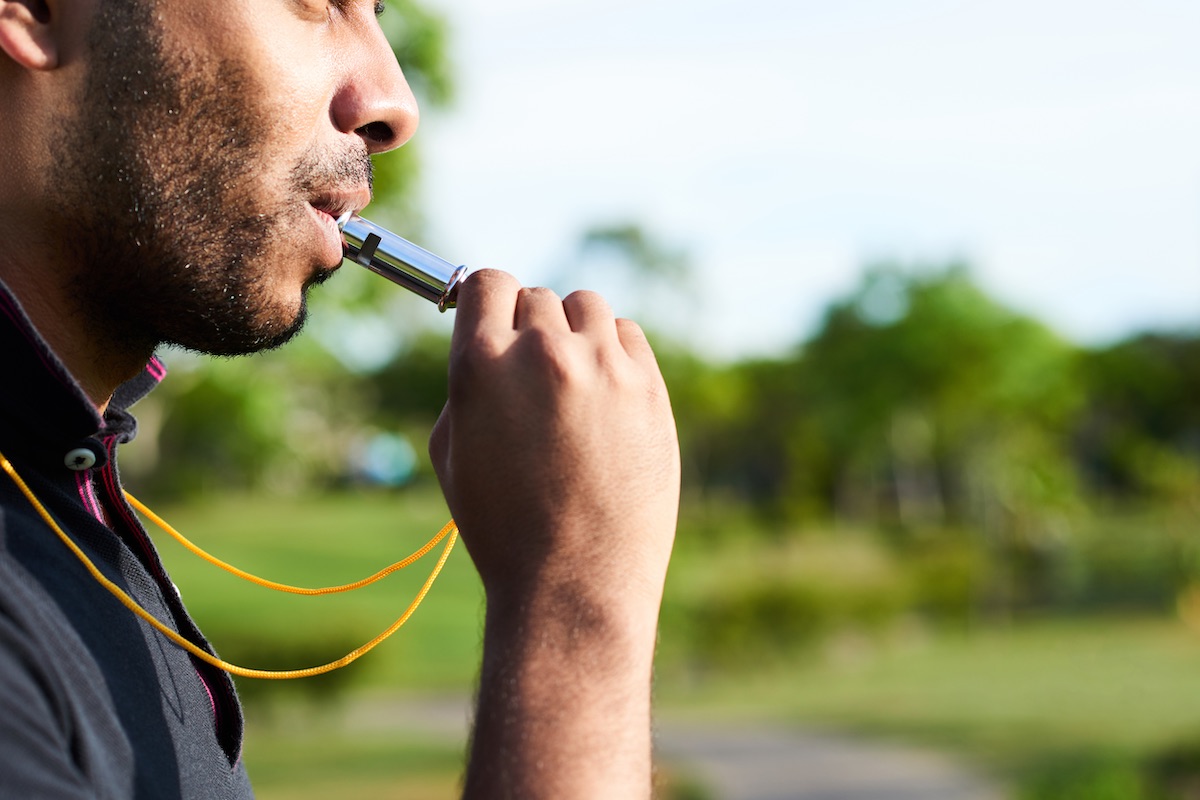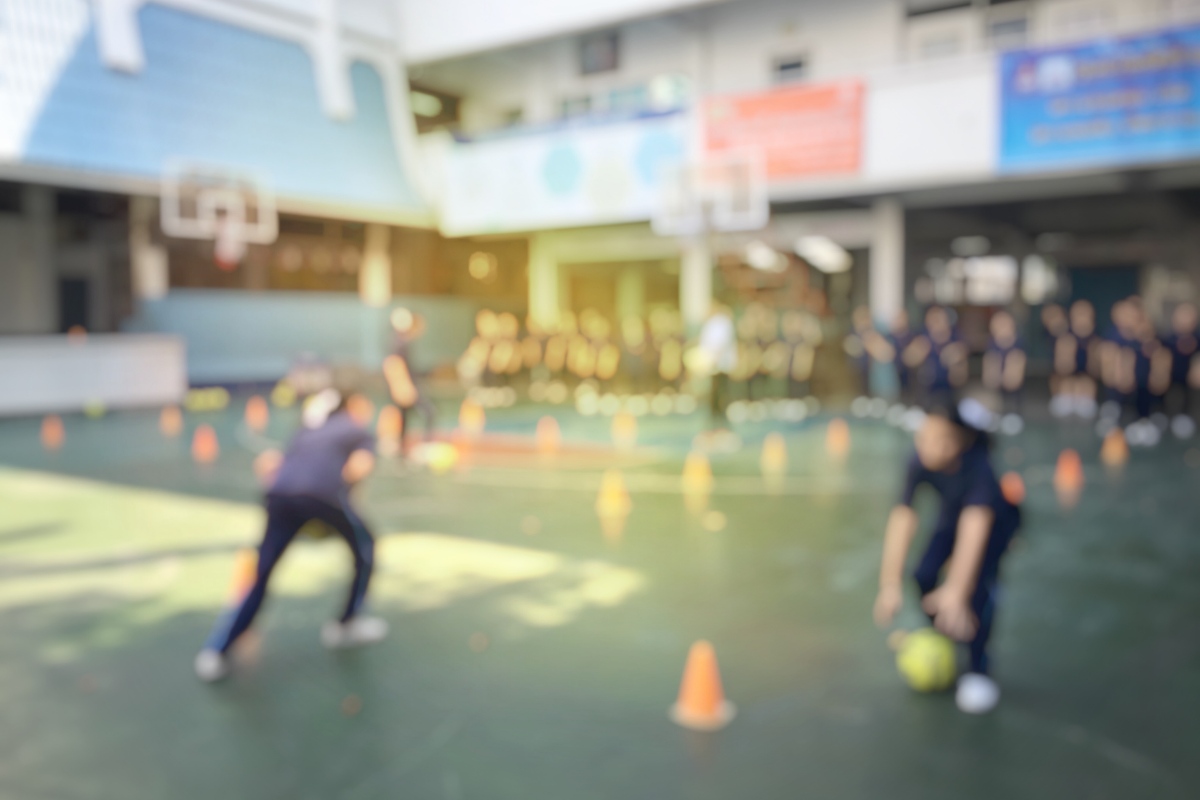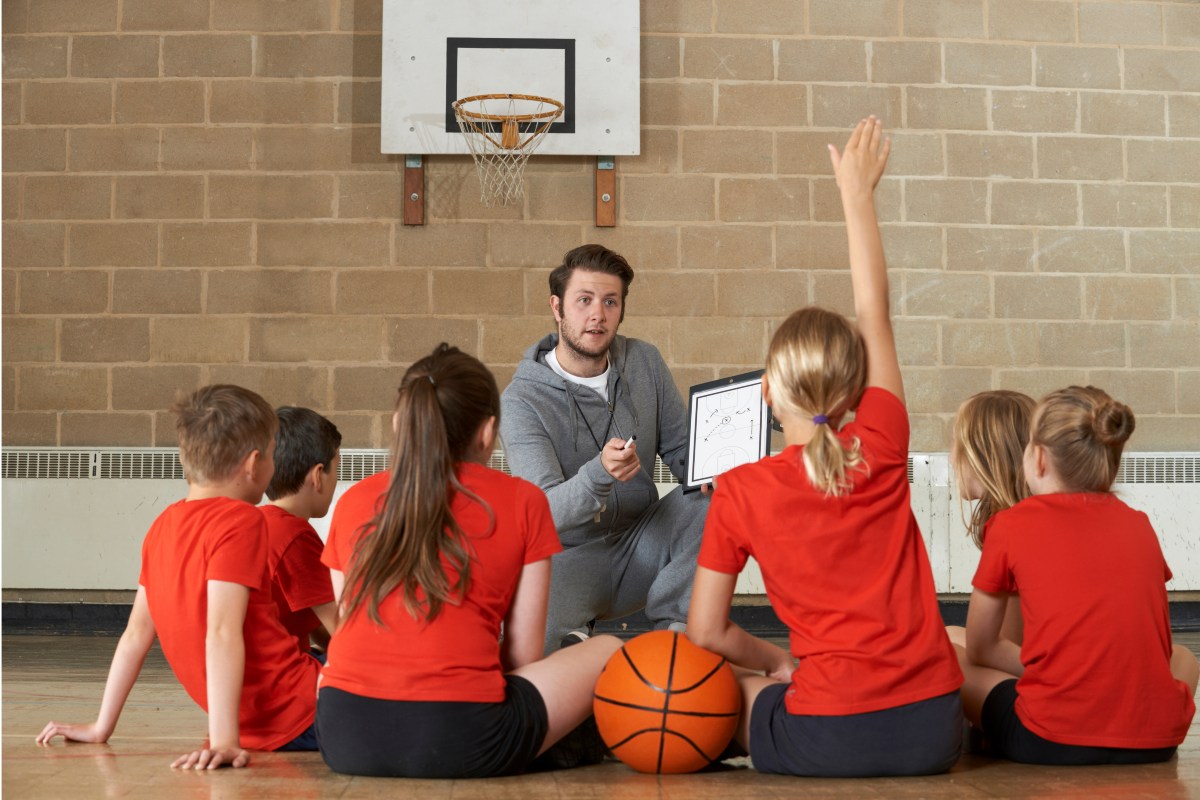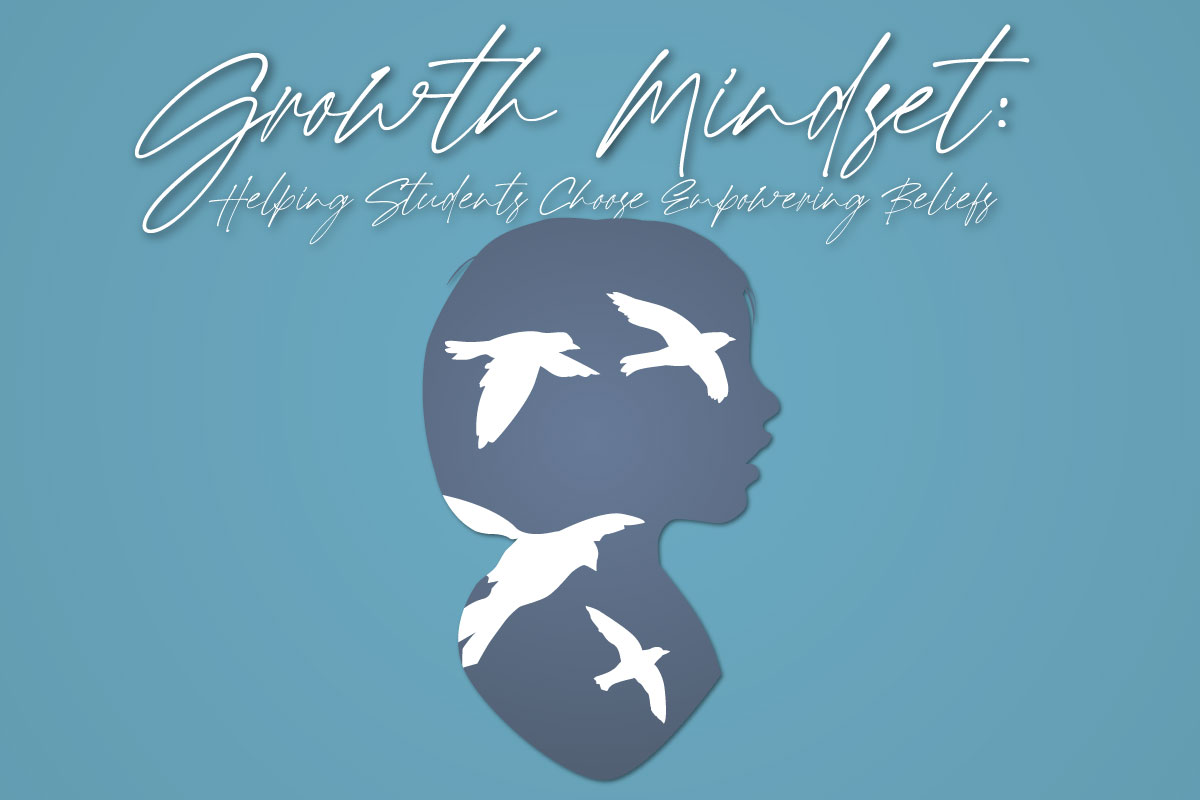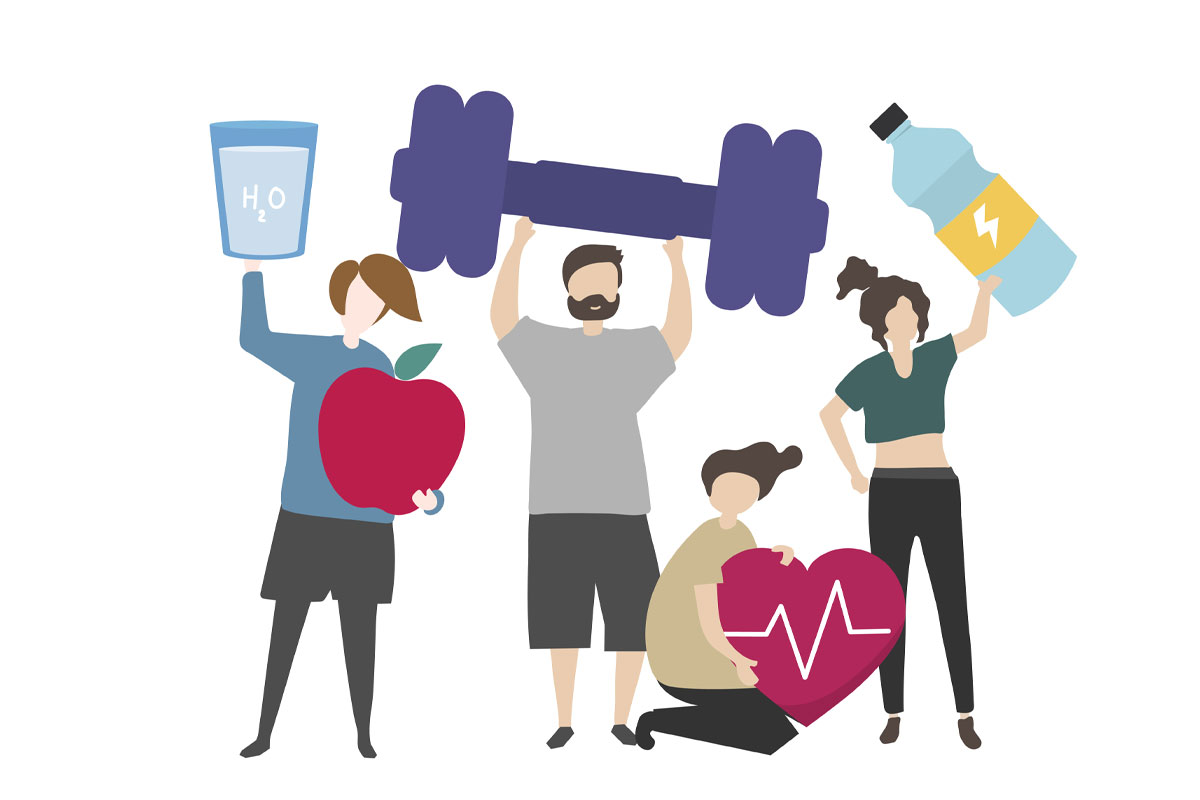Something’s Broken Here: Fixing Brain Breaks
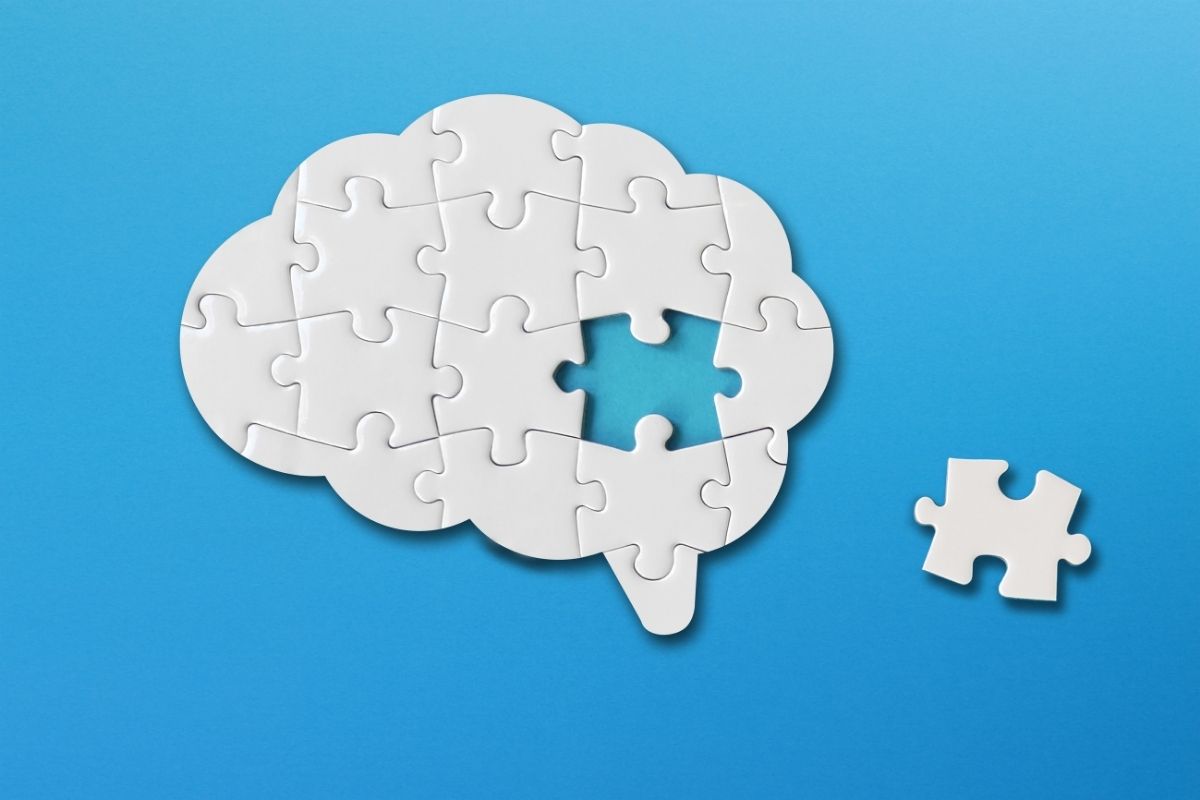
Let’s start with some word association. When you hear or read the words “Brain Break”, what comes to mind? Is your brain actually breaking down? Is your brain so “full” it needs a short pause to reset itself? As a physical education teacher, most of what I do involves physical activity. So when I hear this term, I have mixed feelings. Follow along as I look into the origin of this term as well as the science behind it. Also, I’ll share some of my favorite activities to energize ANY brains that need it.
I am sure you may have heard this term somewhere before. It’s not just for the educational community. Brains breaks are utilized for students in classrooms throughout the world, and for good reason too. They are often a 2 or 3 minute break. They are extremely necessary especially when students are sitting and their brains are actively engaged for long periods of time.
Here’s the rub: I have mixed feelings because I agree this is truly necessary. However, my question for this article is: why can’t movement be infused more often? There is often a lack of movement in classrooms. In the same vein- it’s like having a sports car and you use it to make short trips around town. It’s helpful, but is it the best usage of what you have? As a physical education AND elementary general and special education teacher, I have seen first hand how beneficial making lessons and activities include physical activity increases engagement and content acquisition.
For the purpose of this article, let’s use the definition from the World Health Organization about physical activity. The WHO “defines physical activity as any bodily movement produced by skeletal muscles that requires energy expenditure. Physical activity refers to all movement including during leisure time, for transport to get to and from places, or as part of a person’s work.” It might be hard to do truly vigorous activity in a classroom, however, there are many ways to modify this and make it an integral part of the day. It is understandable that the day is jam packed and you might be wondering: another thing to add in? How will I do this? If you add these strategies in, it should make the day more exciting. Adding a 2-3 minute brain break will make the students more engaged. Exercise increases academic performance and it will create an atmosphere of fun and enjoyment. The teacher also is involved as a model and can demonstrate in front of the class. This way you can improve your wellness too. It doesn’t require much extra preparation. There are many resources and visuals of exercises you can use. The best parts of my day as a PE teacher are getting up and moving and the smiles and laughs as students see me participating along with them. Many programs are calling for educating “the whole child”. Exercise is a way to help take that to the next level.
There are numerous articles and research about the benefits of exercise. In an article found on the CDC website entitled: “Health Benefits of Physical Activity for Children,” there are numerous benefits of physical activity for children. The top 2 are academic performance and brain health. Everyday in my gym, students are learning skills, academic vocabulary, how to work with others and the tools to assess themselves so THEY can take ownership over their learning. If my lessons and units are universally designed so all students can access them and a critical component is physical activity: why can’t the same be done in the classroom?
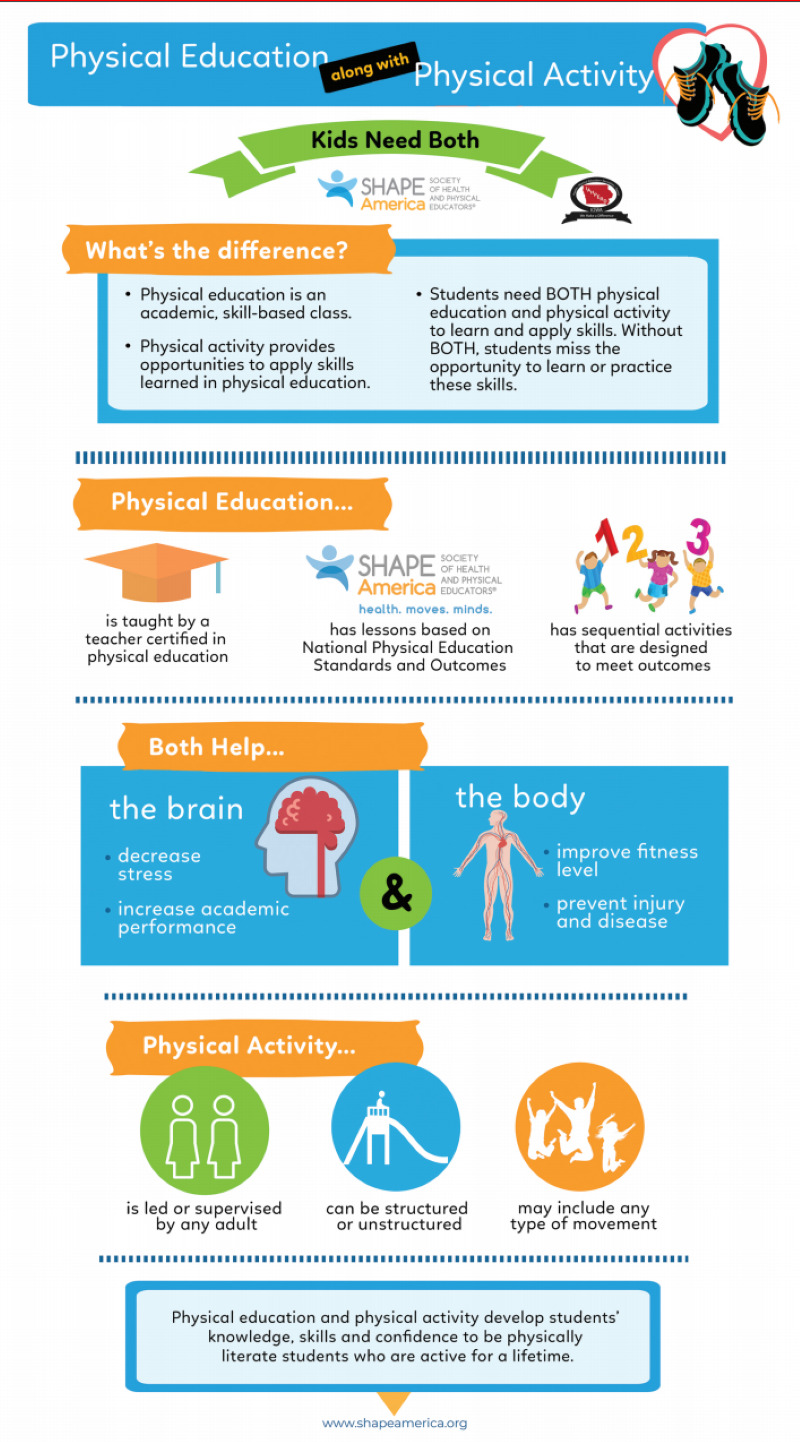
Literacy and Physical/Health Literacy
There is a national PE organization called SHAPE. It stands for the society of health and physical educators. They are a group dedicated to the advancement of health and PE in America. They created the national PE standards and grade level outcomes that we design our lessons and units by. SHAPE America defines the following terms:
- Physical Literacy: An individual’s ability, confidence and desire to be physically active for life.
- Health Literacy: An individual’s capacity to access information, resources and services necessary to maintaining and promoting health.”
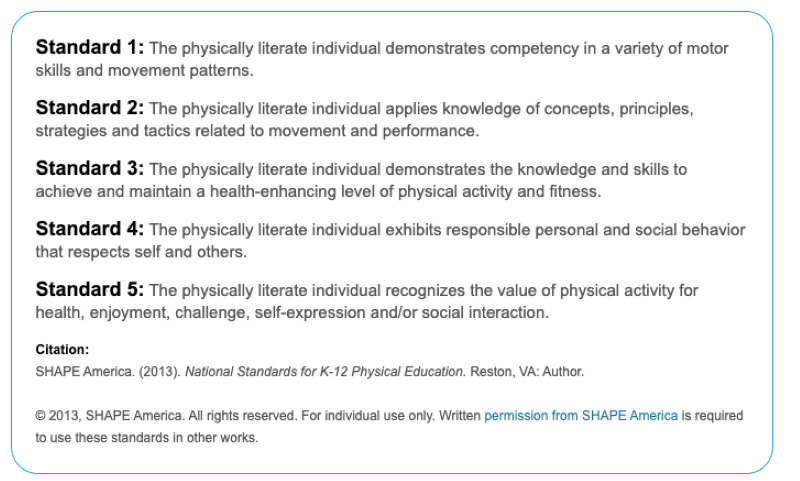
Conversely- is this so different from reading and writing literacy? In an Edutopia.org article by Rebecca Alber, she examines literacy and how it is reflected in different content areas. She has a line that resonated with me: “The ultimate goal of literacy instruction is to build a student’s comprehension, writing skills, and overall skills in communication.” So whether students are reading, writing, or being physically active- it seems that the goal is the same.
I have taught a 4th and 5th grade remote class from 2020-2021 and have 9 other years in PE. One thing that helps students make connections to PE vocabulary and content is “borrowing” concepts. If students learn the writing process, my students see a similar one that I titled “the PE Fitness Process”. The point of all of this is to emphasize that there is not such a huge divide. Rather than just having students disconnect and just take a “break”, embed movement into your everyday classroom activities.
How do you do it?
Imagine having students read a story. Then afterwards, you just move onto something else. What purpose did that have? That’s in essence what brain breaks are. Students/adults need time to decompress and refocus. I fully understand that. Putting on a video that requires students to just follow along- is that really physical activity or just entertainment?
In May 2020, I created an international wellness series to address a similar question: what is physical education and what is physical activity? SHAPE America also answers this question: “Physical activity is bodily movement of any type, while physical education programs (phys ed, or PE) use physical activity to teach children how to establish and sustain an active lifestyle.” I would have guest instructors who were experts in different areas like yoga and zumba. They would instruct and teach. However, it wasn’t the traditional “follow along” kind of video. Steps would be differentiated and scaffolded. There would be teaching happening. I’m not saying every teacher should brush up on PE standards. I’m saying: use this knowledge to work for you. To better understand the national standards, I have included them in this article.
In New York City, we have a program called Move To Improve. It’s an amazing program that provides resources which have immensely helped my teaching. It’s designed for PE teachers to be able to train classroom staff. This way, whenever teachers use the physical movements in the classroom, it counts towards the mandate of PE minutes. Schools also obtain “All Star Status” if more than 85% of staff are certified. So you might be thinking “how are we going to do basketball in the classroom?” or “is this another thing I have to do?” Don’t fret! It’s easy to implement.
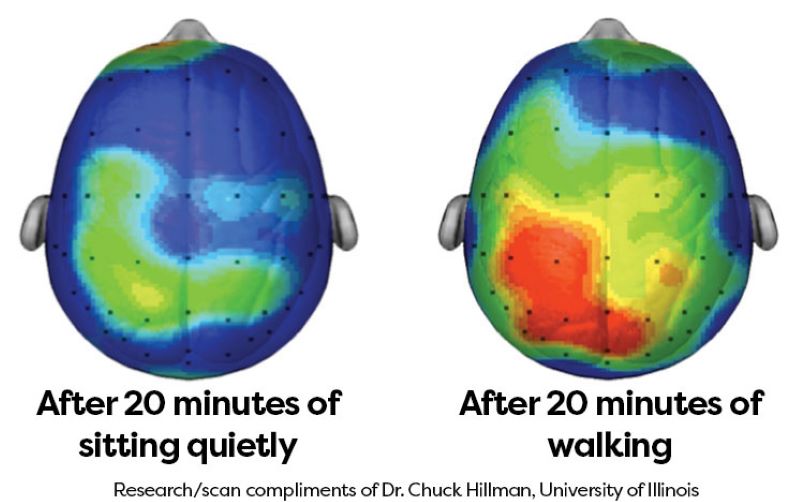
Think about how students conduct “turn and talks.” They sit and interact with each other. Next time, have them stand up and try a yoga pose while they do so. Or maybe march in place. While it may not seem really vigorous, it engages the brain and as it was stated earlier: this will lead to increased cognitive function. What if students refuse to get up? Offering them a choice in physical activity is helpful. Asking them what they want to do also inspires student choice. Allowing students to go at their own pace allows for differentiation and for students to choose an appropriate level of difficulty. Students who are physically able to participate- they can also take part. Many exercises and movements can be modified. Also, think about what movements you choose. In my experience, when a teacher participates as well, students will respond very positively.
These activities are compatible for the gym and the classroom. If you’re studying verbs or nouns, students can read a passage. Instead of just sitting, everytime they come to a verb or noun- they can jump up and down.
Safety is paramount of course. You should encourage students to move safely and go at their own pace. This could lead to a conversation about how do they know they’re going too fast or why not to go? Here’s an example of this conversation might go:
Teacher: Are you feeling tired after that last activity?
Students respond.
Teacher: Why do you think you’re feeling that way? Did you move too fast or maybe too slow?
Students respond with their ideas
Teacher: Why do we move at different speeds? (safety and if you go too fast- you get tired, too slow and you may get bored, exercise may not be beneficial).
Remember the story of Goldie Locks? She found the porridge that was too hot, too cold and then just right. I like to use this story. “Just right” levels of exercise are important not just for safety. Exercise has a lot of benefits. If you move too fast, you really don’t experience the best of what exercise has to offer. If you go too slow, you risk being bored and losing interest. Students would apply this thinking to a “just right” book so the premise is familiar. Offering students choice of movement and the option of going at their own pace also allows for student choice and voice. If you look at the depth of knowledge stems for PE, you’ll see actual verbiage you can use not just for PE and movement but also whatever you’re teaching. DOK level 3 has a question: How would you describe the sequence of (performance / task)? As written, you can use this for seemingly any concept.
With this approach, you’ve built movement into lessons and activities. You give students different speeds to move at (differentiation). You can ask questions about the exercises and/or the concepts you’re teaching. You’re also getting students up and moving and helping students perform better cognitively. You’ve taken that normal 3 minute “brain break” that probably had little to no application to the rest of the lesson and turned it into a sustainable practice that highlights and enhances your content.
Ask students true or false questions. If the answer is true, they can try jumping jacks. If it’s false they can do a yoga tree pose. These are not very strenuous exercises, but students are moving and thinking critically. If students need to computate, you can of course pair them up with others or give extra processing time. Between questions, you can pause and ask students to explain their thinking.
Sites like GoNoodle are great. If you’re not comfortable or for whatever reason would prefer students to refer to someone else- you can (especially with the Wednesday Wellness Series). GoNoodle has a game called Body Spell. As you might have guessed, students have to spell out words. You can pick from premade word lists or even make your own. Mega Math Marathon is especially fun. You pick the grade level and topic. You can even pick subtopics. For example- if I chose subtraction for kindergarten, I could pick regrouping or basic subtraction.
There are many resources that could give you food for thought on different exercises. OPENPhysed.org has a whole section on Active Classrooms. What’s even better is that it’s FREE.
Cheryll Wardell (a colleague of mine and guest instructor on the WWS) shared this site with others including myself. It even has videos on chair yoga. https://www.beaverton.k12.or.us/departments/curriculum-instruction-assessment/bsdbrainboost
Whatever activity or game you want to implement, the benefit to this is that you can do more than just one every once in a while. There is no wrong or right to physical activities. If you choose jumping jacks over squats, you’ll have a winner every time.
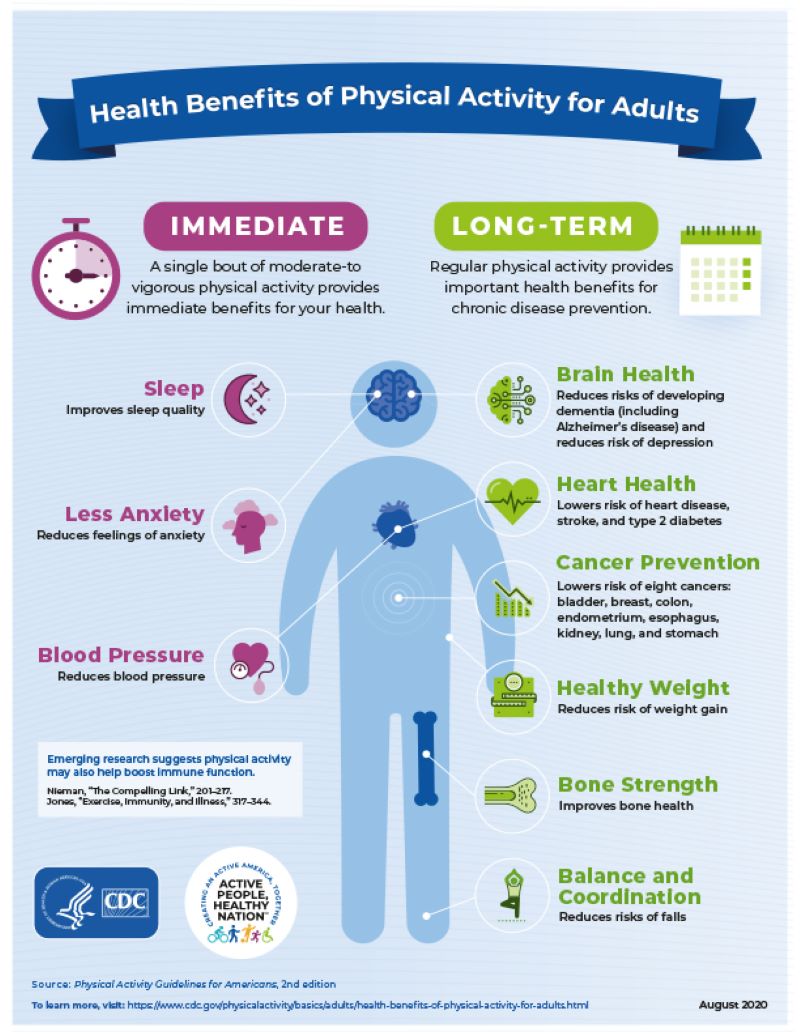
Do or do not there is no try
Famous words from the Jedi Master, Yoda. In exercise and fitness, do or do not there is no try. There are many ways to incorporate movement. Ask the students to choose what they want to do. You can differentiate these activities for any class you might have. Use visual cards for younger students or language learners. What makes these so versatile is that you can universally design your movements so that all students will benefit. Exercise and movement shouldn’t be a consequence. The purpose of all these ideas is to enhance engagement.
Whether you continue to incorporate “brain breaks” or embed activity more frequently, just remember that the students will benefit from the increased physical activity in many ways.
This article is available and can be accessed in Spanish here.


